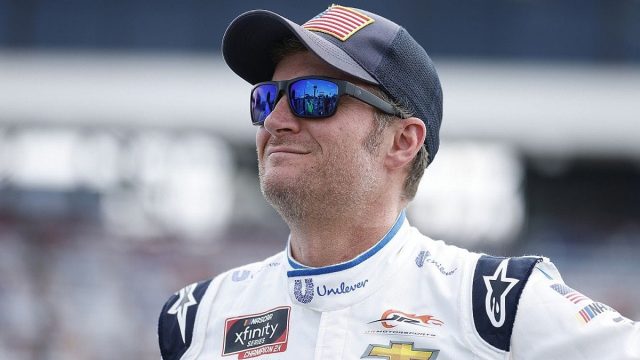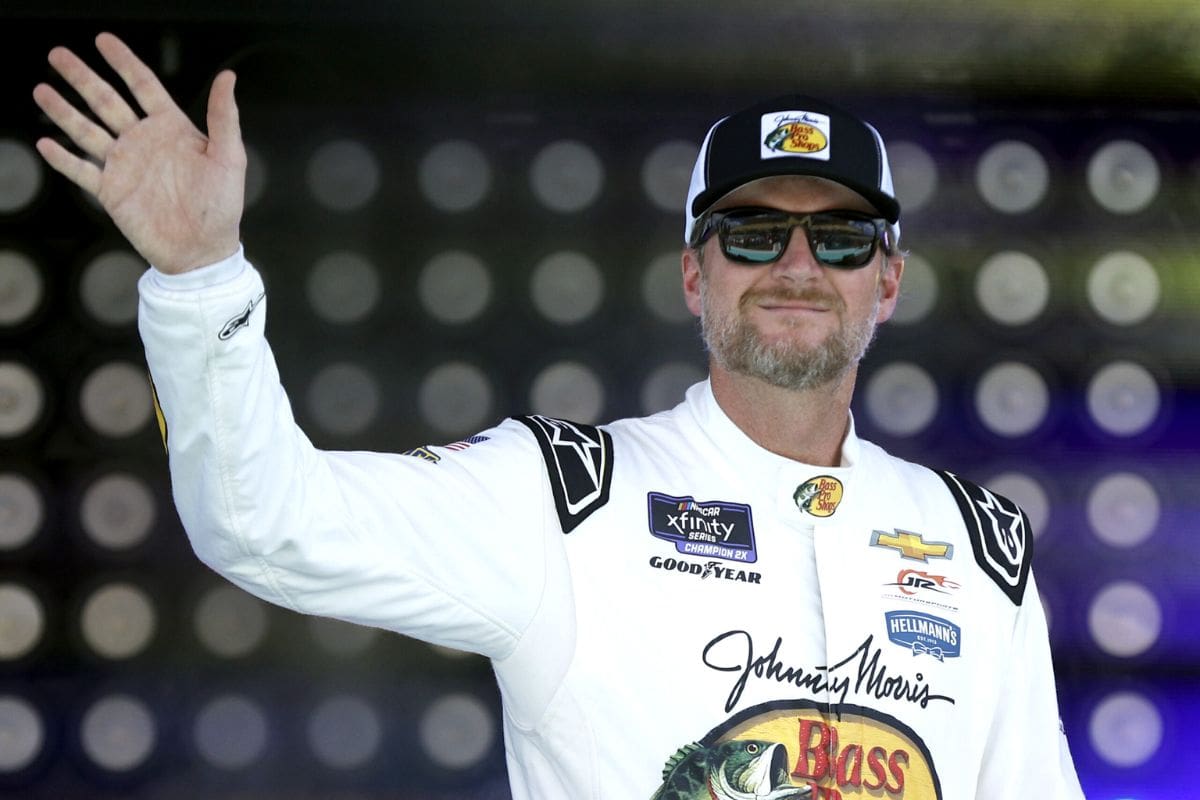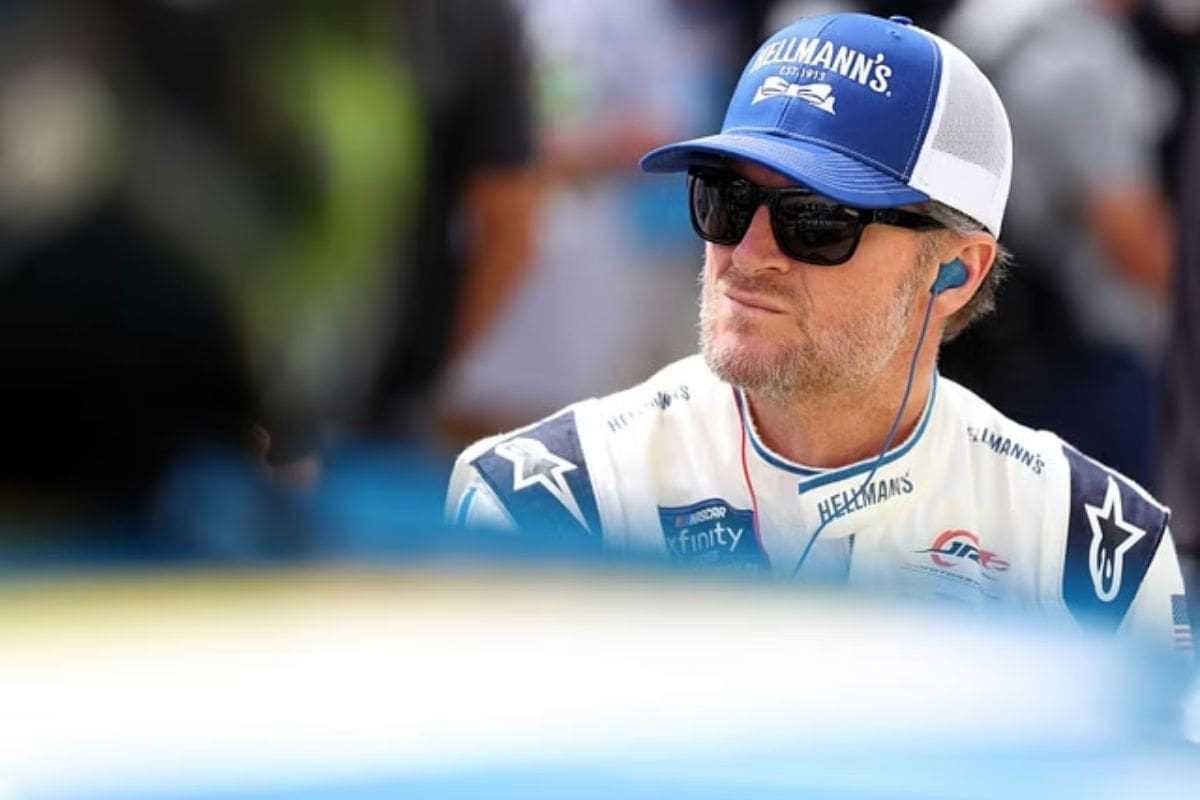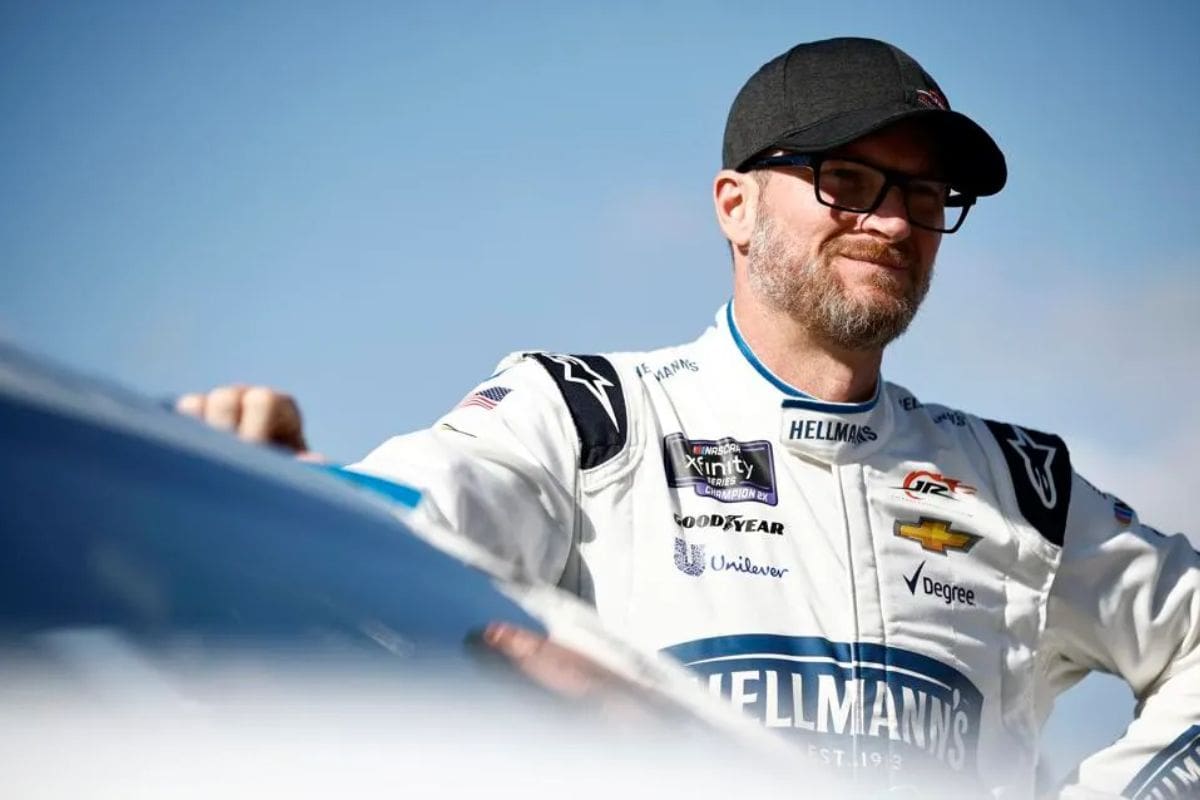Dale Earnhardt Jr. Defends Next Gen Car: Dale Earnhardt Jr. defends the Next Gen car while recognizing the issues it encounters on short tracks. He highlights that the new aero package, rather than the car itself, alters the dynamics of short-track racing. Earnhardt Jr. emphasizes the importance of driver feedback and suggests that fine-tuning tire compounds could improve performance. He also stresses the need for balancing innovation with NASCAR’s traditional values. His advocacy reflects a deep appreciation for the grassroots essence of short-track racing and its historical significance. For a detailed exploration of his insights and potential solutions, there’s more to uncover.
Key Highlights
- Dale Earnhardt Jr. supports Next-Gen cars but acknowledges the need for better adaptation to short tracks.
- He emphasizes the importance of driver feedback in refining the aero package for short tracks.
- Earnhardt Jr. advocates for experimenting with tire compounds to improve racing quality on short tracks.
- He stresses the necessity of preserving NASCAR’s historical short-track venues for maintaining fan engagement.
- Earnhardt Jr. highlights the role of short tracks in preserving NASCAR’s grassroots essence and competitive integrity.
Dale Earnhardt Jr.’s Perspective on Next-Gen Cars and Short Track Racing
How does Dale Earnhardt Jr. view the impact of Next-Gen cars on short track racing? In his assessment, the legendary driver contends that the challenges faced at short tracks such as Richmond, Martinsville, Bristol, and Iowa Speedway are not primarily attributable to the introduction of the Next-Gen cars. Instead, Earnhardt Jr. emphasizes that the issues are multifaceted, involving more than just the vehicles themselves.
Central to his argument is the acknowledgment that the new aero package, while designed with safety concerns in mind, has inadvertently altered the racing dynamics. The improved safety features of the Next-Gen cars have led to changes in how the cars handle on short tracks. While it has improved driver safety, it has also impacted the competitive nature and excitement traditionally associated with short track racing.
“I don’t think the tracks are broken. And I don’t really necessarily believe the car is broken. They’ve tried everything with this car. They’ve stripped the downforce away. They’ve done all the things they can do at the test. The drivers feel nothing when they’re making these changes. So I’m not 100 percent sold that the car is the problem.” – Dale Jr.
Driver feedback has been instrumental in identifying these shifts. Many drivers have reported that the Next-Gen cars, with their new aero configurations, behave differently on the tighter, more confined circuits. These changes have influenced not only the cars’ handling but also the strategies drivers employ during races. Track conditions, which used to play a more predictable role, now interact differently with the cars’ aerodynamics, leading to unexpected outcomes and adjustments.
Earnhardt Jr. also points out that the Next-Gen cars’ aero package impact extends beyond mere handling. The overall race experience, including overtaking and maintaining speed through corners, has been significantly influenced. This detailed view highlights a complex interplay of safety and performance, emphasizing the need for continued adaptation and evolution in the sport.
Dale Earnhardt Jr.’s Views on Potential Solutions
Given the complexities surrounding the Next-Gen cars and their impact on short track racing, Dale Earnhardt Jr. has turned his attention to exploring potential solutions that could improve the racing experience. Recognizing that the performance of these cars is not solely to blame for the current challenges, Earnhardt Jr. has highlighted the importance of experimenting with tire compounds as a potential avenue for improving racing quality.
One significant point of interest for Earnhardt Jr. is the role of Goodyear in this ongoing endeavor. Reflecting on the company’s efforts during the All-Star Race at North Wilkesboro, he acknowledged that the introduction of a different tire combination, while not yielding ideal results, provided NASCAR with valuable feedback. This data is vital for identifying the specific adjustments needed to improve grip and performance on short tracks.
“We can certainly learn a lot by messing with a tire and Goodyear seems to be willing to be a bit aggressive with the tire.” dale jr
Earnhardt Jr. emphasizes that fine-tuning tire compounds could lead to significant improvements in racing quality. The feedback from Goodyear’s trials is seen as a stepping stone towards achieving the ideal tire performance that complements the Next-Gen cars. By focusing on this aspect, Earnhardt Jr. believes that NASCAR can develop tires that enrich the racing dynamics, making the races more competitive and engaging for both drivers and fans.
“They(NASCAR) did learn from it. And I think the drivers are open-minded and have given a lot of great input and feedback on what they’re feeling with the tires as they start to change the compound. And so I’m hoping that Goodyear can continue race by race to push the envelope on a softer compound and a tire that will give us the racing that we want.” – Dale Jr.
Dale Earnhardt Jr.’s Criticism and Advocacy for Short Tracks
In his commitment to safeguarding the integrity of short-track racing, Dale Earnhardt Jr. has been vocal about the deficiencies of NASCAR’s current short-track package and the potential implications for venues like Richmond Raceway. Through his platform on Dirty Mo Media, he has articulated his concerns and proposed improvements to guarantee these tracks remain a cornerstone of the sport. Earnhardt Jr. argues that the introduction of Next Gen cars has not translated well to short tracks, impacting both competitive dynamics and fan engagement.
View this post on Instagram
“Everybody wanted to take a date away from Richmond last week. Silliest sh*t I’ve ever heard in my life. But now, we’re finally urging about getting the short track package right.” – dale jr
A significant point of Earnhardt Jr.’s criticism is the apparent decline in racing excitement at short tracks. He contends that the current package fails to deliver the close-quarters, high-drama racing that fans expect and cherish. This reduction in excitement could lead to decreased attendance and viewership, hampering the future of iconic short-track venues.
Earnhardt Jr. emphasizes the importance of driver feedback in crafting a more effective short-track package. He believes that incorporating insights from those behind the wheel can lead to more targeted track enhancements, ultimately enriching the racing experience. In advocating for these changes, Earnhardt Jr. aims to preserve the rich heritage of short-track racing while adapting to the evolving landscape of NASCAR.
Reaction to Short-Track Races and Criticism of Schedule Changes
Despite his advocacy for short-track racing, Dale Earnhardt Jr. has voiced significant frustration over the recent Cup Series events at Richmond and Martinsville, highlighting a perceived decline in the quality of competition and fan engagement. Earnhardt Jr. has been outspoken about the importance of preserving NASCAR heritage, arguing that short tracks are crucial to the sport’s identity. His concerns are particularly striking in view of potential schedule changes that may reduce the number of races at these historic venues.
“It really made me angry that we walked out of Richmond and said, ‘Man, that track don’t need no second date, we need to go to somewhere else.’ That’s not true.” – dale jr
Earnhardt Jr.’s criticism stems from the observed lack of competitive excitement in recent races, which he believes undermines fan engagement. He maintains that the short-track package needs refinement to strengthen competition improvement, ensuring that races remain thrilling and unpredictable. The former driver has expressed reservations about the increasing focus on road courses, suggesting that this shift detracts from the essence of NASCAR.
“And then we have the race at Martinsville, and now everybody hit the panic button. Dude, I was hitting that fricking button a year ago. It’s beyond panic time alright? It’s panic time last week when you’re taking about taking a date away from a racetrack.” – dale jr
The debate over track diversity is central to Earnhardt Jr.’s argument. While the inclusion of different track types aims to broaden the sport’s appeal, he asserts that this should not come at the expense of traditional short tracks. These venues, he argues, are essential to NASCAR’s heritage and offer a unique form of racing that cannot be replicated elsewhere.
In addressing schedule changes, Earnhardt Jr. emphasizes the importance of maintaining a balanced approach that honors the sport’s roots while exploring new opportunities. His perspective highlights that any modification should prioritize both historical significance and the improvement of competition to maintain robust fan engagement.
Dale Earnhardt Jr.’s Continued Advocacy and Historical Context
Frequently championing the cause of short-track racing, Dale Earnhardt Jr. has drawn from NASCAR’s rich history to emphasize the importance of preserving and enriching these iconic events. His ongoing efforts highlight the critical role that short tracks play in maintaining the sport’s integrity and competitiveness. By reflecting on his earlier criticisms, Earnhardt Jr. paints a vivid picture of the urgency to address the issues plaguing these venues.
Earnhardt Jr.’s advocacy history is steeped in a deep appreciation for the grassroots essence of short-track racing. He has consistently emphasized their significance through different platforms, urging for changes that ensure these events remain a cornerstone of NASCAR. His arguments are not just nostalgic but rooted in practical concerns about fan engagement and the sport’s long-term viability.
- Historical Reverence: Earnhardt Jr. has repeatedly pointed to NASCAR’s golden era, where short tracks were the proving grounds for both emerging and established talents, highlighting their continued relevance.
- Strategic Recommendations: He has proposed actionable changes, such as revising car designs and track configurations, to improve the competitive nature of short-track races.
- Fan-Centric Approach: Acknowledging the importance of fan engagement, Earnhardt Jr. advocates for measures that enhance the spectator experience, ensuring that short-track events remain thrilling and accessible.
News in Brief: Dale Earnhardt Jr. Defends Next Gen Car
Dale Earnhardt Jr.’s defense of the Next Gen car amid short track issues highlights the complexities of balancing innovation with tradition in NASCAR.
His views on potential solutions and criticism of schedule changes emphasize a commitment to preserving the essence of short track racing.
Earnhardt Jr.’s continued advocacy, grounded in historical context, highlights the importance of addressing these challenges to guarantee the sport’s longevity and uphold its connection to core fans and its storied past.
ALSO READ: Dale Earnhardt Jr’s Bold Vision for NASCAR’s Future



